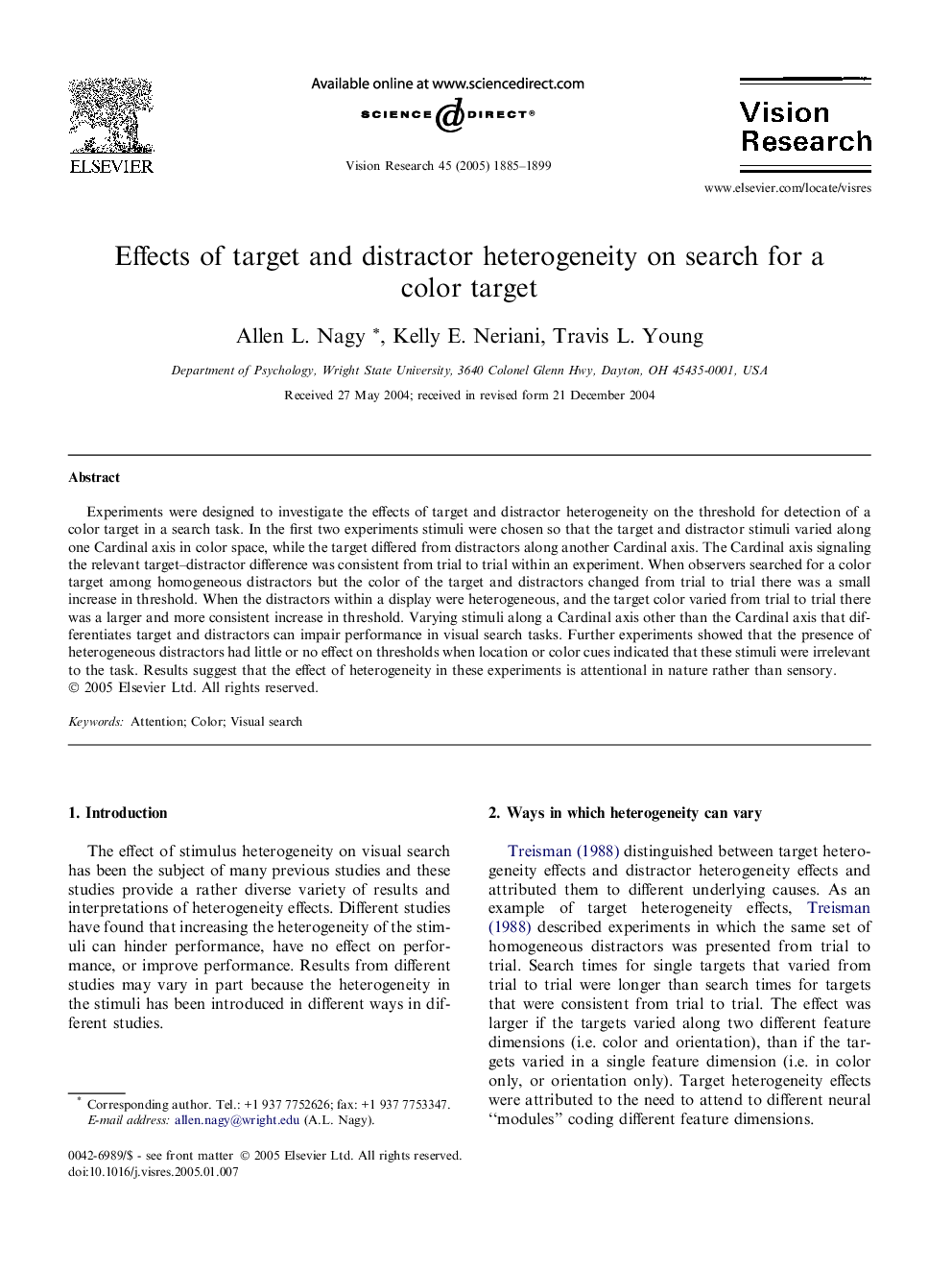| Article ID | Journal | Published Year | Pages | File Type |
|---|---|---|---|---|
| 9348424 | Vision Research | 2005 | 15 Pages |
Abstract
Experiments were designed to investigate the effects of target and distractor heterogeneity on the threshold for detection of a color target in a search task. In the first two experiments stimuli were chosen so that the target and distractor stimuli varied along one Cardinal axis in color space, while the target differed from distractors along another Cardinal axis. The Cardinal axis signaling the relevant target-distractor difference was consistent from trial to trial within an experiment. When observers searched for a color target among homogeneous distractors but the color of the target and distractors changed from trial to trial there was a small increase in threshold. When the distractors within a display were heterogeneous, and the target color varied from trial to trial there was a larger and more consistent increase in threshold. Varying stimuli along a Cardinal axis other than the Cardinal axis that differentiates target and distractors can impair performance in visual search tasks. Further experiments showed that the presence of heterogeneous distractors had little or no effect on thresholds when location or color cues indicated that these stimuli were irrelevant to the task. Results suggest that the effect of heterogeneity in these experiments is attentional in nature rather than sensory.
Keywords
Related Topics
Life Sciences
Neuroscience
Sensory Systems
Authors
Allen L. Nagy, Kelly E. Neriani, Travis L. Young,
